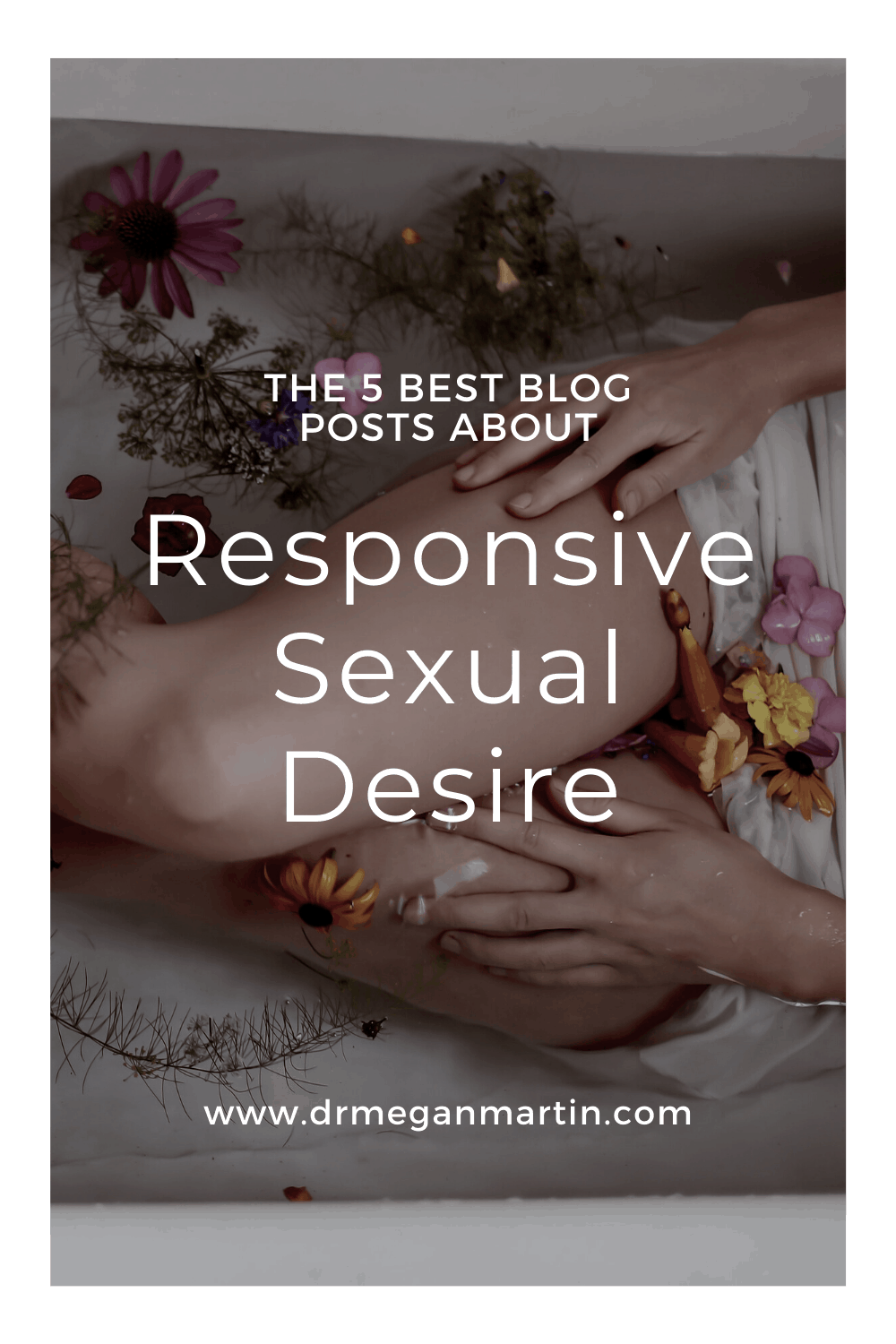Simply understanding the difference between spontaneous and responsive sexual desire can change the way you see your sex life forever. You can go from thinking you’re broken and struggling with low libido to reclaiming how your body works and making your sex life work FOR you rather than AGAINST you.
That’s why I had to put together this round-up of 5 of the best blog posts on the internet about responsive sexual desire. They will change the way you think about sex and even change your relationship with your libido.

1. The Misunderstood Science of Sexual Desire
This post by The Cut does a great job of explaining the difference between spontaneous and responsive desire with an emphasis that it’s not only women who experience responsive desire. They make the important point that men experience responsive desire more often than you think.
It also gives you some of the important history behind the study of sexual desire and explains Basson’s model of the human sexual response cycle.
The visual representation of the sexual response cycle really helps you understand how sexual desire really works.
It’s not the previous simple linear model where sexual desire -> arousal -> plateau -> orgasm -> resolution.
We now know that sexual desire and the human sexual response is a lot more nuanced than this.
2. Sex Educators Explain Spontaneous vs. Responsive Desire
This blog post by Dame makes some very important points about responsive sexual desire. No matter how much you try to get your partner to “respond” with sexual desire, it’s not going to work if there are too many brakes, and not enough accelerators, at play.
They also have a few helpful tips on how to increase your responsive sexual desire.
These include:
- Making sure all of your basic needs are met (are you fed, hydrated, sleeping well?)
- Making sure you’re in a comfortable environment and you trust your partner.
- Actively seeking erotic circumstances, like watching a movie with lots of sex scenes or giving porn a go.
(Have you watched Bridgerton on Netflix yet? If not, do yourself a favour! It’s juicy!)
3. Nothing Is Wrong With Your Sex Drive
This piece by Emily Nagoski for The New York Times really drills home the fact that just because you experience more responsive desire than spontaneous desire, it doesn’t mean anything is wrong with you.
She goes more into detail about why a lack of spontaneous desire shouldn’t be called a disorder and how it cannot be treated simply with a pill. She emphasizes that sexual desire is more nuanced, more contextual and more responsive for the majority of women.
But I can’t count the number of women I’ve talked with who assume that because their desire is responsive, rather than spontaneous, they have “low desire”; that their ability to enjoy sex with their partner is meaningless if they don’t also feel a persistent urge for it; in short, that they are broken, because their desire isn’t what it’s “supposed” to be.
Emily Nagoski
4. Responsive vs. spontaneous desire
This blog post by Dipsea does a wonderful job of calling us out for how we think about sexuality. It challenges us to look at sexual desire in a different way.
By assuming that men and women experience sex and sexual desire the same way, we neglect what women need and pathologize them for not responding in the same way that men do.
By assuming that men and women experience sex and sexual desire the same way, we neglect what women need and pathologize them for not responding in the same way that men do. Share on XThis can lead to women thinking that they are broken, have low libido and need professional help when they are, in fact, totally normal.
5. Understanding These 2 Types of Sexual Desire Will Help You Feel In Control of Your Libido
This blog post by Shape gives some great practical advice for couples with responsive sexual desire. It can be especially useful when both partners have a more responsive desire type.
Tips on how to lean into responsive sexual desire include:
- Scheduling sex
- Intentionally taking turns initiating sex
- Stop making sex the objective of every erotic encounter
- Use pleasure products, like sex toys and lube.
- Improve your Sex Ed by reading more books about sex and how sexual desire works, such as Come As You Are by Emily Nagoski
Last thoughts
Sexual desire, and especially responsive sexual desire, can be very complex. Everyone is different and responds in different ways. What’s most important to remember is that you have more control over your sexual desire than you think you do.
By actively creating sexual or erotic contexts within your relationship, rather than relying on spontaneous sexual desire, you can really have the sex life you’ve always dreamed of having.
If you found this post helpful, I’m sure you’re no stranger to how having a low libido can make you feel. If you’re tired of struggling with your low libido and want to revive your sex life, start by completing the Libido Assessment to take the first step today.






0 Comments